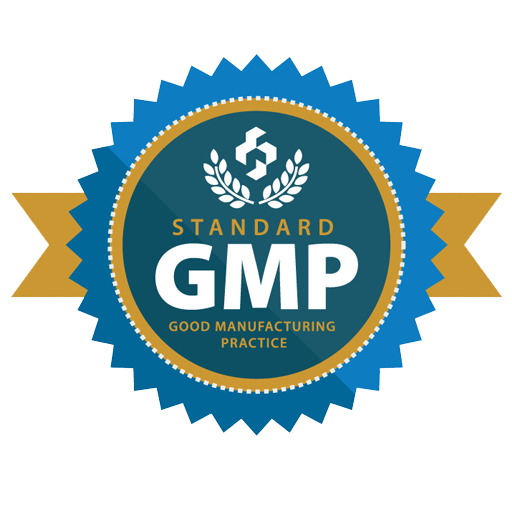Bleomycin Powder For Solution For Injection
Package leaflet: Information for the patient
Bleomycin 15 units Injection
- Keep this leaflet. You may need to read it again
If you have any further questions, ask your doctor or pharmacist.
- This medicine has been prescribed for you only. Do not pass it on to others. It may harm them, even if their signs of illness are the same as yours.
- If you get any side effects, talk to your doctor or pharmacist. This includes any possible side effects not listed in this leaflet (see section 4).
What is in this leaflet
1. What Bleomycin is and what it is used for
2. What you need to know before you take Bleomycin
3. How to take Bleomycin
4. Possible side effects
5. How to store Bleomycin
6. Contents of the pack and other information
1 WHAT BLEOMYCIN IS AND WHAT IT IS USED FOR
This medicine contains the active ingredient bleomycin sulphate. Bleomycin is one of a group of medicines called cytostatic medicines. These medicines are anti-cancer medicines sometimes referred to as chemotherapy. They attack cancer cells and prevent them from dividing.
Bleomycin is used to treat:
• Certain types of cancer (squamous cell carcinomas) in the head and neck, cervix and external genitalia;
• Certain types of lymph node cancer (e.g. Hodgkin's disease and Non-Hodgkin’s lymphoma of intermediate and high malignancy);
• Testicular cancer;
• Fluid accumulation in the lungs (as a result of cancer).
Bleomycin can be used alone, or in combination with other cancer medications, and/or in combination with radiotherapy.
2 WHAT YOU NEED TO KNOW BEFORE YOU TAKE BLEOMYCIN
Bleomycin will not be given:
- if you are allergic to bleomycin sulphate or to any similar anti-cancer medicine;
- if you have Ataxia telangiectasia (very rare inherited disease that leads to difficulties in coordinating your movements and the risk of infections).
- if you have an acute lung infection or severe lung impairment;
- if you have a history of lung damage (possibly) caused by bleomycin; - during breast-feeding (see also "Pregnancy and lactation" section).
Warnings and precautions
Talk to your doctor or pharmacist or nurse before you are given Bleomycin if:
- you are over 60 years of age;
- your kidneys or liver no longer function properly;
- you have or have had a lung disease;
- you had lung irradiation prior to bleomycin treatment, or if you are having radiation therapy during bleomycin treatment;
- you have chickenpox - you are being administered oxygen.
Tell your doctor that you are using bleomycin You must also tell your doctor if you have an operation planned as it may be necessary to adjust your treatment with bleomycin.
The patient groups specified above are more sensitive to bleomycin's harmful effects on the lungs. The doctor will probably examine you more often and/or take X-rays of your lungs. If you are treated with bleomycin, a regular lung function test should be performed, to monitor the possible adverse effects of bleomycin on the lungs. If you have a cough and/or are short of breath, this can be a sign of the adverse effects of bleomycin on the lungs. In this case you should inform a doctor immediately.
Like other cytotoxic active substances, bleomycin can trigger tumour lysis syndrome in patients with rapidly growing tumours. Appropriate supportive treatment and pharmacological measures might prevent or alleviate such complications.
Other medicines and Bleomycin
Tell your doctor or pharmacist if you are taking or using, have recently taken or used, or might take or use any other medicines.
An interaction is taken to refer to when (medicinal) products used together may influence each other's efficacy and/or side effects. An interaction may occur when bleomycin is used together with:
- Carmustine, mitomycin, cyclophosphamide, gemcitabine (medicines used for certain types of cancer) and methotrexate (a medicine used for certain types of cancer, rheumatism and severe skin diseases): there is an increased risk of harmful effects on the lungs;
- Cisplatin (an anti-cancer medicine) and other medicines that cause kidney damage: there is an increased risk of side effects from bleomycin (potentiation of pulmonary toxicity);
- Vinca alkaloids (a group of medicinal products used for certain types of cancer, e.g. vincristine, vinblastine): circulatory disturbances may occur in the extremities (fingers, toes, tip of the nose). In very severe cases the extremities can die (necrosis);
- Acetyldigoxin (a medicine for cardiac disorders): there is a risk that the effect of acetyldigoxin will be reduced;
- Phenytoin (a medicine for epilepsy): there is a risk that the effect of phenytoin will be reduced;
- Clozapine (a medicine for schizophrenia): it may cause more severe reduction in number of white blood cells which makes infections more likely.
- Radiotherapy: the risk of side effects on the lungs and/or mucous membranes is increased; - Oxygen: you are at greater risk of pulmonary toxicity if you are given oxygen during anaesthesia;
- Gentamicin, amikacin and ticarcillin (medicines that inhibit the growth of bacteria): the efficacy of these substances may be reduced;
- Ciclosporine and tacrolimus (medicines that reduce efficacy of immune system): risk of excessive generation of lymphocytes.
- Granulocyte colony-stimulating factor: lung damage may be aggravated;
- Live vaccines: there is a risk of serious or lifethreatening infections caused by the vaccine. Vaccinations with live vaccines should therefore not be administered to patients receiving bleomycin.
Pregnancy, breast-feeding and fertility Pregnancy
If you are pregnant or breast-feeding, think you may be pregnant or are planning to have a baby, ask your doctor or pharmacist for advice before using this medicine.
Animal studies have shown that this medicine can harm the embryo.xx
The use of bleomycin should be avoided during pregnancy, especially during the first 3 months. If bleomycin treatment is vital during the first three months of pregnancy, a medical consultation on aborting the pregnancy is essential.
Both men and women must take measures to prevent a pregnancy during use of bleomycin, and for 6 months after the end of the treatment. If pregnancy occurs during treatment with bleomycin, genetic counselling is recommended. Men who wish to father children in the future should seek advice on storing sperm before starting treatment with bleomycin because there is possibility of becoming irreversibly infertile by the treatment.
Breast feeding
It is not known whether bleomycin or the metabolically degraded materials are secreted in your milk, but since there is a possibility that bleomycin is harmful to your child, you must not breast-feed during treatment with bleomycin.
Fertility
Bleomycin therapy may cause irreversible infertility
Driving and using machines
This medicinal product may affect your reactions and your ability to drive.
Possible side effects of chemotherapy with bleomycin may occur, such as nausea and vomiting. If you are affected by these side effects, you should not drive and/or operate machines that require you to be alert.
Bleomycin Powder for solution for injection/infusion contains sodium
This medicines contains less than 1 mmol sodium (23 mg) per dose, i.e essentially “sodium free”
3 HOW TO TAKE BLEOMYCIN
The doctor will calculate the required quantity for you, based on the dosage details specified later.
The usual dose:
The (total) dose depends on the indication, your age, renal function, and combination with other anticancer medicines. Your doctor will set the dose of bleomycin, the duration of the treatment, and the number of treatments. These can vary for each patient
There is a risk of serious hypersensitivity reaction especially in lymphoma patients which may occur directly or sometime after administration. Therefore, your doctor will give you a test dose and will observe for 4 hours before starting bleomycin therapy for the first time.
Method of administration
Your doctor will administer bleomycin into a vein or artery, under the skin, into a muscle, directly into the tumour, or into the space surrounding the lungs (intrepleural), either by injection or using an infusion
Use in children and adolescents
There is insufficient experience with regard to the administration of bleomycin in children and adolescents. Until more information is available, bleomycin should only be administered in children and adolescents in exceptional circumstances and at special facilities.
If you have been given more Bleomycin than you should
Symptoms that can occur if you have received too much Bleomycin include: low blood pressure, fever, increased heart rate and shock. If you notice any of the above symptoms, please tell your doctor, who will arrange for the appropriate treatment. Use of the medicinal product must be discontinued immediately.
Information for the doctor:
Information about treating an overdose can be found at the end of this leaflet.
If you have not received Bleomycin when you should
If you have missed an injection, please talk with your treating doctor, to clarify if and how to make up for the missed dose.
If you stop taking Bleomycin
If you suddenly stop taking Bleomycin without consulting a doctor, the original symptoms may recur.
If you have any further questions on the use of this medicine, ask your doctor or pharmacist or nurse.
4 POSSIBLE SIDE EFFECTS
Like all medicines, this medicine can cause side effects, although not everybody gets them. Bleomycin can cause immediate and delayed side effects. Fever on the day of injection is the earliest reaction. Loss of appetite, loss of hair, chills, fatigue, inflammation of the lungs (interstitial pneumonia) – shortness of breath or cough, inflammation of the mucous lining of the mouth and nausea may also occur. Pain at the injection site and in the tumour area has also been observed on occasion. Other sporadic side effects include a fall in blood pressure and local thrombophlebitis (inflammation of a vein) after administration into a vein.
Skin and mucosal lesions are the most common side effects and are observed in up to 50 % of the patients treated. They comprise redness; rash; itching; formation of ulcers, stretch marks and blisters; heavy pigmentation; and tenderness and swelling of the fingertips.
Serious side effects:
If you develop any of the following side effects, tell your doctor immediately:
• Coughing
• Breathlessness
• Cracking or popping sound when breathing You may need to have your treatment stopped.
Side effects can include the following:
Very common (may affect more than 1 in 10 patients)
• interstitial pneumonitis (inflammatory changes in the lungs)
• pulmonary fibrosis (disease of the lung tissue caused by increased formation of connective tissue between the alveoli)
• laboured breathing
• loss of appetite
• weight loss
• nausea and vomiting
• mucositis (inflammation of the mucous membranes)
• stomatitis (inflammation of the mucous lining of the mouth)
• inflammatory redness of the skin
• itching
• striae (stretch marks)
• blistering
• hyperpigmentation (increased pigment formation)
• tenderness and swelling of the fingertips
• hyperkeratosis (excessive thickening of the skin)
• hair loss
Common (may affect up to 1 in 10 people)
• Severe hypersensitivity reactions. These reactions may occur immediately, or after a delayed period of a few hours after the first or second dose. Tell your doctor straight away if you get any sudden 5 wheeziness, difficulty in breathing, swelling of the eyelids, face or lips, rash or itching (especially affecting your whole body). idiosyncratic reaction (various types of hypersensitivity reaction)
• headache
• acute respiratory insufficiency (acute respiratory distress syndrome - ARDS)
• respiratory failure
• pulmonary embolism
• rash, urticaria, erythema
• induration (hardening of the skin)
• swellings (due to fluid retention in the tissues)
• inflammatory skin reaction
• fever, chills and malaise
Uncommon (may affect up to 1 in 100 people)
• myelosuppression (damage to the bone marrow)
• leukopaenia (reduction in white blood cell count)
• neutropaenia (reduction in neutrophil granulocytes in the blood)
• thrombocytopaenia (reduction in platelets)
• haemorrhage (bleeding)
• dizziness
• confusion
• low blood pressure
• angular stomatitis (infection of the corners of the mouth) and diarrhea
• deformation and discolouration of the nails, bulla formation at pressure points
• muscle and joint pain
• oliguria (decreased urine output)
• pain during urination
• polyuria (increased urine volume)
• urinary retention
• pain in the tumour area
• phlebitis (inflammation of a vein)
• hypertrophy (thickening) of the vein wall and venous access constriction (with i.v. administration)
• induration (hardening of the tissue following administration into a muscle or with local administration)
Rare (may affect up to 1 in 1000 people)
• Neutropaenic fever (fever caused by a decrease in white blood cells)
• heart attack, pericarditis (inflammation of the fibrous sac surrounding the heart) and chest pain
• cerebral infection, thrombotic microangiopathy (disease of the capillaries and arterioles),
• haemolytic uraemic syndrome (severe disease affecting the blood and kidneys)
• cerebral arteritis (inflammation of the small and medium-sized arteries in the brain)
• Raynaud's phenomenon (a vascular disorder), arterial thrombosis, deep vein thrombosis
• hepatic impairment
• scleroderma (hardening of the connective tissue)
Vary rare (may affect up to 1 in 10,000 people)
• Tumour lysis syndrome (condition following rapid breakdown of tumours)
Not Known (frequency cannot be estimated from the available data)
• Overwhelming infection (sepsis),
• severe reduction in blood cells (pancytopenia),
• reduction in red blood cells (anaemia),
Reporting of side effects
If you get any side effects talk to your doctor or hospital pharmacist or nurse. This includes any possible side effects not listed in this leaflet. By reporting side effects you can help provide more information on the safety of this medicine.
5 HOW TO STORE BLEOMYCIN
Keep this medicine out of the sight and reach of children.
Do not use this medicine after the expiry date which is stated on the carton and the vial after EXP. The expiry date refers to the last day of that month.
Store in a refrigerator (2°C - 8°C).
For single use only. Discard any residues.
The reconstituted/diluted product should be used immediately. Do not use Bleomycin if you notice any visible signs of deterioration in the product or the vial, e.g. discolouration of the powder or damage to the vial and the seal.
Do not throw away any medicines via wastewater or household waste. Ask your pharmacist how to throw away medicines you no longer use. These measures will help protect the environment.
6 CONTENTS OF THE PACK AND FURTHER INFORMATION
What Bleomycin contain
- The active substance is bleomycin (as bleomycin sulphate). Each vial contains 15,000 International Units (I.U.) of bleomycin (as bleomycin sulphate).
- The other ingredients are sodium hydroxide (for pH adjustment) and hydrochloric acid (for pH adjustment).
What Bleomycin look like and contents of the pack
White to light yellowish freeze dried substance in type I clear glass vial closed with a bromobutyl rubber stopper and sealed with a flip-off aluminium seal.
Pack of 1 vial, 10 and 100 vials. Not all pack sizes may be marketed.
Manufactured in India by:
TAJ PHARMACEUTICALS LTD.
Mumbai, India
at SURVEY NO. 188/1, 190/1TO 4, ATHIYAWAD ,
DABHEL, DAMAN- 396210 (INDIA)
Mfg. Lic. No: DD/xxxxxxx/2018-A
Click here for Download pdf of patient informationClick here for Download pdf of prescribing information
Our Awesome Features
Taj Pharma is one of the largest generic pharmaceutical company in India. We hold top positions in different established markets worldwide and are building a strong presence in many emerging generics markets. You can contact Taj Pharma India's business by telephone on 91 022-2637-4592, if you have an enquiry about the company, our healthcare business, or one of our medicines.
Product Summary
Bleomycin is used to treat cancer. It works by slowing or stopping the growth of cancer cells. It Used in the treatment of squamous cell cancers, melanoma, sarcoma, testicular and ovarian cancer.
About Taj Pharma
Welcome to the Taj Pharmaceuticals Limited India site. We would like to give you an overview of Taj Pharmaceuticals Limited in India: our background, organization, products, core belief and prospects.
Patient Care
Bleomycin solution for injection use, safety information, warnings and side effects, indications and usage, Interactions, dosage, patient information, adverse reactions and clinical pharmacology.
Customer Care Service
1800-222-434 or
1800-222-825.
Frequently Asked Question
This section displays common question about Bleomycin Injection.
Contact Taj Pharma
214, Bake House, Bake House Lane,
Fort, Mumbai 400001, India
Bleomycin Injection Image Gallery
Bleomycin is used to treat cancer. It works by slowing or stopping the growth of cancer cells. This medication may also be used to control the build-up of fluid around the lungs (pleural effusion) caused by tumors that have spread to the lungs.
Click here for Download pdf of patient informationClick here for Download pdf of prescribing information
Bleomycin Solution For Injection
How to use Bleomycin / Drug Interactions
Know more Bleomycin Solution for Injection
Dosing & Uses
Dosage Forms & Strengths powder for injection 15unit 30unit Squamous Cell Carcinoma 0.25-0.5 unit/kg (10 to 20 unit/m²) IV/IM/SC q1-2Weeks
Read MoreAdverse Effects
>10% Mucocutaneous toxicity including rash, erythema, hyperpigmentation, urticaria (>50%) Febrile reactions, acute (25-50%)
Read MoreWarning
Use cautioin in renal impairment Hepatic toxicity reported Use caution when administering oxygen during surgery(increases risk of pulmonary toxicity)
Read MorePharmacology
Mechanism of Action Glycopeptide antibiotic; inhibits DNA, RNA, protein synthesis in G2, M phases Pharmacokinetics Half-Life: 2 hr
Read MoreFor Free & Detailed solution: Contact our Experts 24/7
Our Partners
A dream for new world Anchored in India and committed to its traditional values of leadership with trust, the Taj Pharma Group is spreading its footprint globally through excellence and innovation.Taj Pahrma







